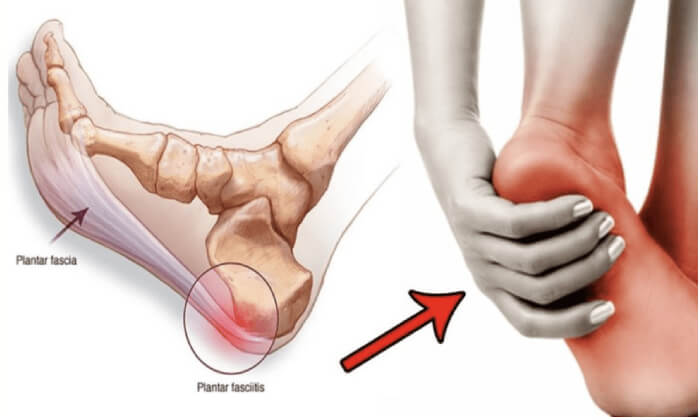Content Attributes
What is Plantar Fasciitis?
Plantar Fasciitis is a common condition that affects the foot and can cause pain in the heel or the bottom of the foot. It is caused by inflammation of the plantar fascia. Which is a thick band of tissue that runs from the heel to the ball of the foot and supports the arch of the foot. This condition can be quite painful and can make walking and standing difficult, which can have a major impact on your daily life. In this article, we will discuss the causes, symptoms, and treatment options for plantar fasciitis.
Causes:
Plantar fasciitis can be caused by a variety of factors, including overuse, aging, flat feet, high arches, obesity, and wearing shoes that do not provide adequate support. People who participate in high-impact sports, such as running and jumping, are more likely to develop plantar fasciitis.

Symptoms:
The most common symptom of plantar fasciitis is pain in the heel or the bottom of the foot. Which is usually most severe in the morning and can improve throughout the day. The pain can be described as a sharp, stabbing pain or a dull, aching pain. In some cases, the pain may also be felt in the arch of the foot. In addition to pain, swelling, and tenderness in the heel or the bottom of the foot may also be present.
Treatment:
There are a variety of treatment options available for plantar fasciitis. And the best option will depend on the severity of the condition and the individual’s needs and preferences.
- Stretching and Physical Therapy: Stretching and physical therapy can help to alleviate pain and improve flexibility in the foot. Your physical therapist may recommend exercises to strengthen the muscles in your foot and leg. As well as stretching exercises to improve flexibility in the plantar fascia.
- Arch Supports: Arch supports can help to reduce the strain on the plantar fascia and can be especially helpful for people with flat feet or high arches. Arch supports and orthotic insoles can be purchased over the counter or custom-made by a podiatrist.
- Ice Therapy: Applying ice to the affected area can help to reduce swelling and relieve pain. Wrap a bag of ice in a towel and apply it to the affected area for 20 minutes at a time, several times a day.
- Anti-inflammatory Medications: Nonsteroidal anti-inflammatory drugs (NSAIDs) such as ibuprofen can help to reduce pain and swelling associated with plantar fasciitis.
- Orthotics: Custom-made orthotics can be helpful for people with flat feet or high arches. As they can help to redistribute pressure and provide support for the foot.
- Cortisone Injections: Cortisone injections can help to reduce pain and swelling in the foot and can be an effective treatment option for plantar fasciitis.
- Surgery: In severe cases, surgery may be necessary to relieve pain and improve function in the foot. The type of surgery will depend on the individual’s specific needs and may involve the release of the plantar fascia, the removal of a spur, or the reconstruction of the foot.
Conclusion
Plantar fasciitis can be a painful condition that can have a major impact on your daily life. However, with the right treatment and care. It is possible to manage the symptoms and reduce the risk of future episodes. If you are experiencing pain in your foot. It is important to seek medical attention to determine the cause and determine the best course of treatment. Your doctor or physical therapist can



